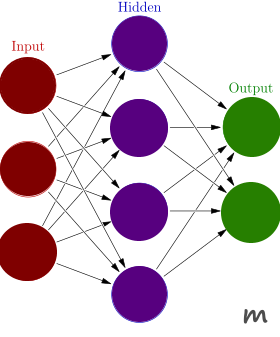Deep Learning (DL)
Definition
Deep learning is a subset of machine learning inspired by the structure of the human brain. Deep learning uses multiple layers to progressively extract higher level features from the raw input. Learning can be supervised, semi-supervised or unsupervised. Most modern deep learning models are based on artificial neural networks.
While machine learning requires parameters based on descriptions of the input, deep learning uses data on what the object or piece of data is, and how it differs from something else.
For instance, if you got everyone to draw a letter, each person would draw the letter differently. As a human, you can identify the letter regardless of whether a child, or an adult drew it — a machine usually would not understand this.
Deep learning gives the ability for this to be understood, by taking an input of the pattern comparing it with data of what something should look like and based on weights and possibilities within the system — giving an output of what the likely letter is.
Taking an unstructured data set and giving it a likely meaning for a decision based on a probability. An application of this is for email triage, or chatbots in simple applications, or more complex applications in medical condition recognition.
Why it is called Deep Learning?
Before Deep Learning, there was only one hidden layer in the Artificial Neural Network (ANN). But after discovery of back propagation, number of layers in the hidden layers begun to increase. One layer learns only one dimension, another layer learns another dimension. It begins to go deeper and deeper as the number of layers increases in the hidden layers section. Hence the name comes deep learning.
Deep learning is basically doing Machine Learning with DEEP Neural Networks.
A Deep Neural Network (DNN) is an artificial neural network (ANN) with multiple layers between the input and output layers. Typically, a variety of deep learning systems are designed using the DNN model. For example, a DNN that is trained to recognize dog breeds
will go over the given image and calculate the probability that the dog in the image is a certain breed. A Deep Neural Network, in general, consists of input and output layers along with a couple of intermediate layers, also called hidden layers.
The below figure shows a neural network with ONE hidden layer.
Any layer is connected to the previous and next layers with some fashion which is dependent on the Neural Network architecture. The above figure shows a multilayer perceptron in which layers connected in fully-connected fashion, i.e., each neuron is connected to ALL neurons in the previous and next layers. The more hidden layers we have, the deeper the network is.What is a Deep Neural Network?

See Also